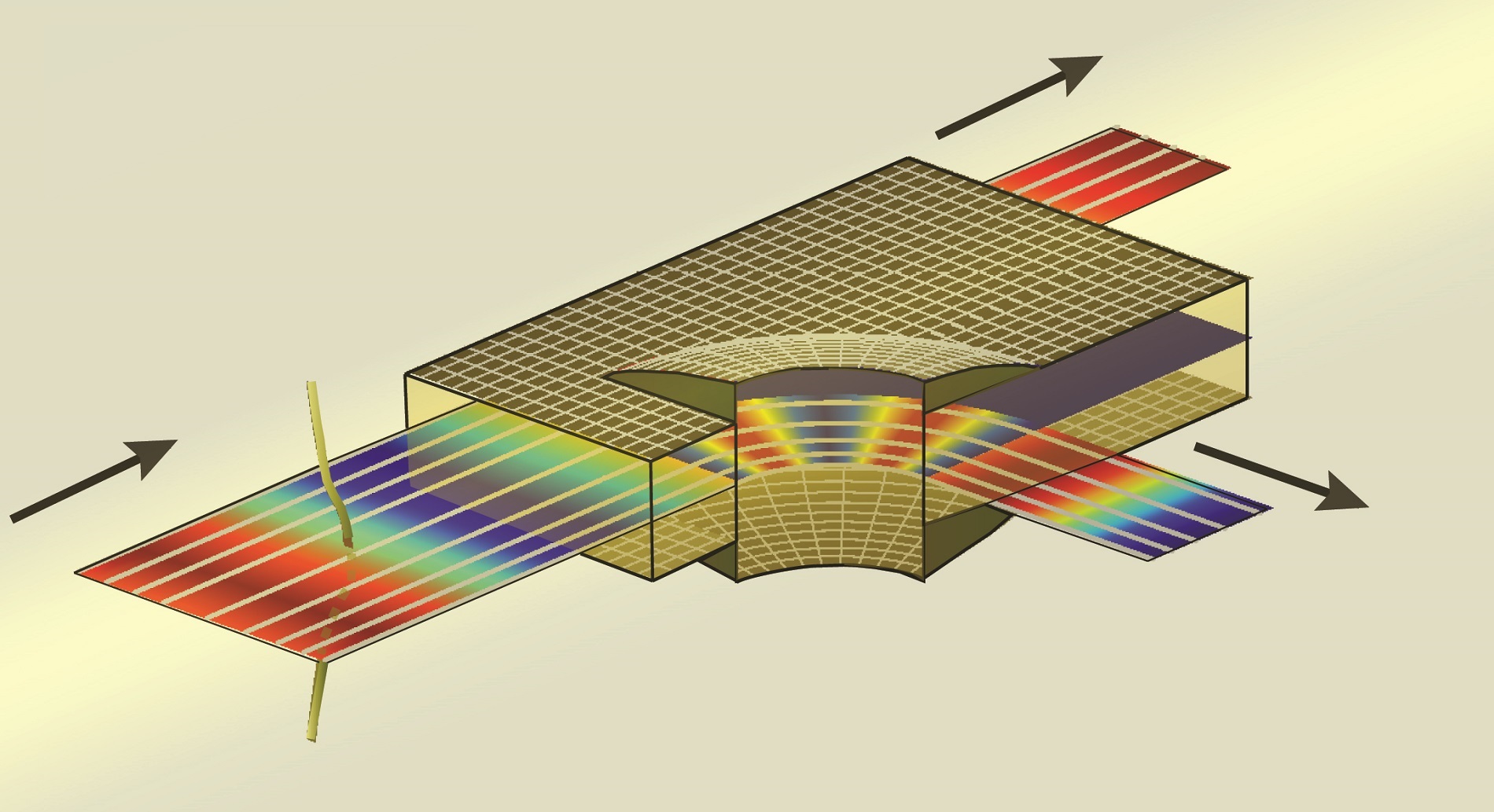Nov 29, 2016
Researchers at Chalmers University of Technology have developed a method that enables them to manipulate light to follow any predetermined path along a surface. The innovation has now been described as one of the world’s 30 most exciting discoveries within optics and photonics during 2016.
Earlier this year, Chalmers researchers Philippe Tassin and Sophie Viaene published their discovery about how light can be controlled with metamaterials. Amidst strong international competition, their paper has now been chosen as one of the best this year by the influential magazine, Optics & Photonics News. The research is thereby featured in the special edition, Optics in 2016, which was published today.
The innovation from Chalmers University of Technology makes it possible to manipulate light to follow any predetermined path along a surface. With the help of a mathematical design tool it is possible to create various artificial materials – metamaterials – that guide the light along the path of your choice.
“We don’t have to think about the limitations of natural materials. Instead, we decide what we want to do and then we design a metamaterial waveguide that makes it work. This is beautiful physics, building on Einstein’s general theory of relativity,” says Sophie Viaene, PhD student in the Division of Condensed Matter Physics.
The new technique has a wide field of application. For example, it can be used in optical chips to achieve reliable data delivery on the internet, or to speed up routers.
“Our method opens up the toolbox of transformation optics to a plethora of waveguide-based devices,” says Philippe Tassin, Professor in the Division of Condensed Matter Physics.
In the future, the researchers hope that they can even improve how light is produced.
“For example, an LED lamp is far from perfect when it comes to energy efficiency. Metamaterials could extract light in a more efficient way – and maybe we can also manipulate the colour of light,” says Tassin.
The article, Transforming two-dimensional guided light using nonmagnetic metamaterial waveguides was written by Philippe Tassin and Sophie Viaene at Chalmers University of Technology and by Vincent Ginis and Jan Danckaert at the Vrije Universiteit Brussel (the Free University of Brussels). The paper was published in Physical Review B in February 2016.















